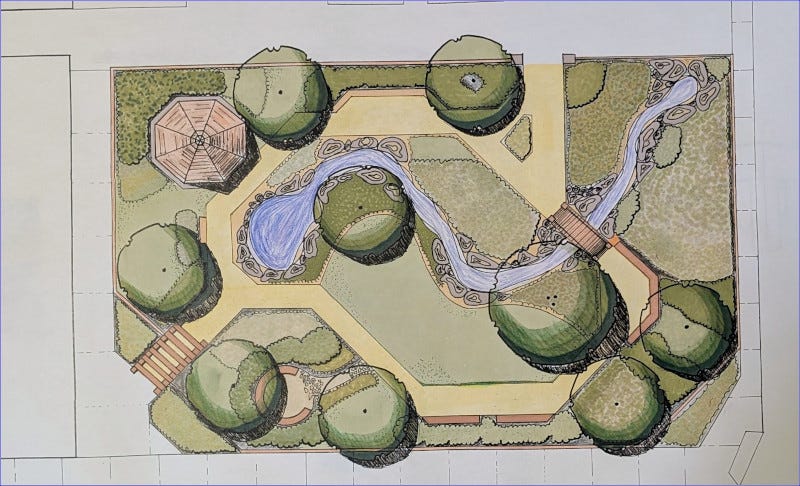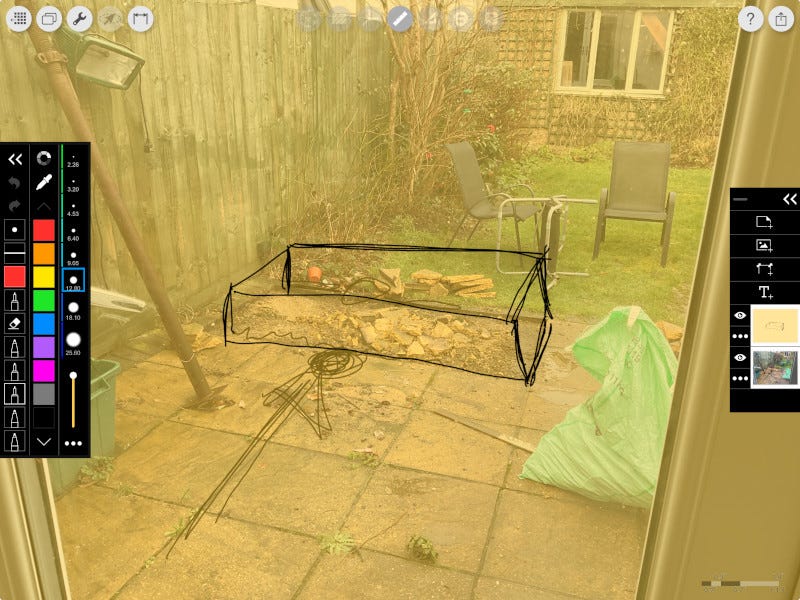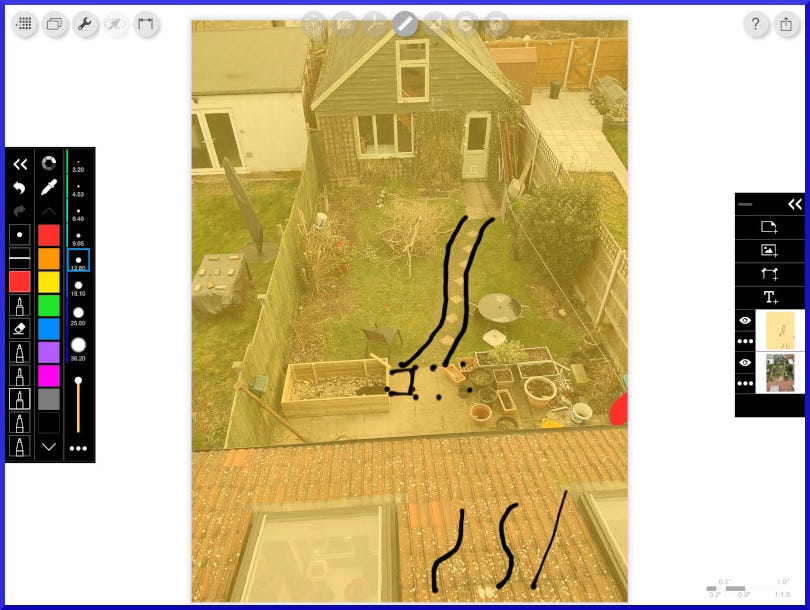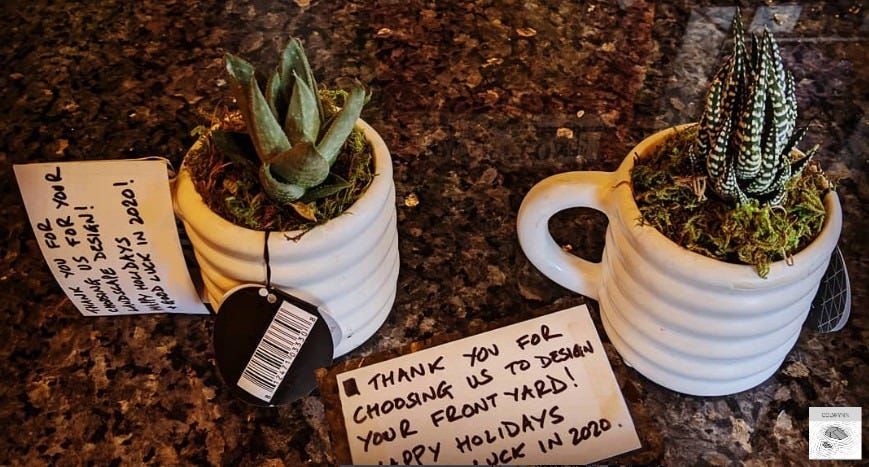The Importance of Check-Ins During a Garden Project
A good habit for managing emotions
I am a Garden Designer. Clients get frustrated with me.
This is understandable. I get frustrated working on a garden design project.
During a garden design project, it can feel like progress is slow or hard to see. Regular updates reassure clients that real work is happening, even when the site is a mess. For designers, photo records highlight achievements and help maintain momentum. Clear, visual communication builds trust. They keep everyone aligned and celebrate the transformation as it unfolds.
These updates can keep our emotions in check. These updates reassure the client. These updates reassure all stakeholders in a garden design project.
Stakeholders in a Garden Design Project:
The Client (e.g. homeowner, property owner)
The Designer (e.g. garden designer, landscape architect, landscaper)
The Installer (e.g. landscapers, material suppliers, plant nurseries)

Emotional Check
Each stakeholder has a vested interest in making a garden project successful. Gardens are full of life with fauna and flora in a well-designed garden. In the same way that we say “it takes a village to raise a child”, it takes a village to raise a garden. The villagers are happy when they see the garden come to fruition.
For my garden projects, I warn all clients that there is no overnight success. Natural gardens featuring native plants that support local wildlife take time to mature.
“First Year Slower, Second Year Grower, Third Year Show-er”
The Garden Design process can be a long journey. It is important to keep emotions in check to assure all stakeholders that we are on the right path for success.
I call these progress updates “Emotional Check-ins”, or “Check-in” for short.
We all enjoy checking into a hotel, but the check-out can be sad as it means our holiday is over. Make progress updates as enjoyable as a Hotel Check-in. After a long flight for a trip that you spent months planning for, who doesn’t enjoy that? You can now relax and bask in the feeling that you achieved something. Relax. Lie on a lounger and enjoy the view from the rooftop pool.

How to Check-In on a Garden Design Project
A check-in is included in most garden design projects. For example, when the installer updates the designer. Another example is when the garden designer updates the client. This is usually achieved by sending photos or videos, or by video chatting via FaceTime or WhatsApp.
When the Garden Designer does this for a client, they may ask the client, “How does this make you feel?”.
Rarely does the client ask the designer the same question.
The designer will often use updates from the installer to see how work is progressing. They rarely ask a landscaper how they feel about the project.
Use these check-ins for feedback in both directions. The designer should have a conversation with the client about how they feel. The designer should not be afraid to share their feelings with the client. If you are a garden designer and you have a bad feeling about the project, tell the client. Share the Good with the Bad, and you will build trust.
“Honesty is the best policy”
When I worked with salespeople in a previous life, this was their mantra. It’s a good mantra to live by. Be honest with your client; don’t tell “white lies” to make them feel better. Use the Check-in to get feedback in both directions. During a Check-in, always refer to the garden design plans to keep you honest.
Check-Ins with other Stakeholders
When a garden designer checks in with their installer, do the same as you would with a client. Tell the installer how the client feels, how you feel, and ask how they feel about the project. When installers feel like they are part of the village, they take pride in their work. If they are proud of the work they do, they will provide feedback. Garden designers can use this as a teaching moment.
Many successful designers will have close relationships with their landscapers and other sub-contractors. Doing these check-ins may feel like a no-brainer. If so, try to go one step further and share the installer’s emotional feedback with the client. Being open and transparent to the client is generally well-received.
Do not forget the check-ins with suppliers. Spend time with the plant nursery staff and give them feedback about projects. They will love to know how the plant that they nurtured from seed or cutting is now growing into a mature living thing with its own identity. They helped raise a child that was then released into your care and now has a new home in the client’s garden. Let the stoneyards know about how you used their rocks and boulders. I have gotten a lot of good ideas from hanging out in material yards. I doubt these ideas would be so forthcoming if I did not check-in with these other villagers.
Spilling the Tea
In the village of garden design, I am the garden designer. Garden Designers often need to be project managers. Project managers make sure everything is working smoothly. Sometimes I feel like the village gossip, as I need to convey all these feelings from the check-ins and share information. I am always spilling the tea.

To keep the check-in grounded and prevent slipping into idle gossip, I use visual aids.
Visual Aids for Check-Ins
Visual communication is key to success in garden design. I am OK with writing on paper like a boomer, but I prefer to use a tablet. Using a tablet such as an iPad, I can take a picture and annotate over it, like tracing paper. This helps visualise information in a powerful way. It helps to communicate with others and also to help others communicate with me.
Below is a simple example where I was explaining the basic size of a raised planter that I built for a client. They worried it was going to be too big. I needed to explain that it would also serve to drain stormwater from their patio (as indicated by the arrows).
As you can see, these visual aids do not need to be detailed or works of art. They can be chicken scratches like this. It helps the conversation rather than distracting from it.
By keeping it simple, I sometimes also pass the pencil over to my client, who can explain how they feel. In the next example, the client showed me how they feel about a “wavy pathway”. I was describing a serpentine path in my design. Using this simple tool allowed us to be both on the same page and deal with the anxiety that we felt and expressed in the check-in.
Other Aids for Check-Ins
Sometimes, a kind gesture is all that is needed to get the emotional check-ins on the right track. A simple example of this is a gift.
Be awesome to the rest of the village, and they will be awesome in return.





